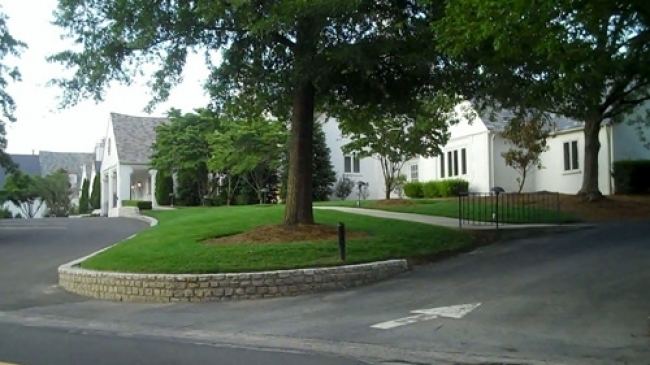Area 121 ha | NRHP Reference # 09001105 Added to NRHP 11 December 2009 | |
 | ||
Location Avon Rd., Chelsea Circle, Cornwall Rd., Devon Rd. Exeter Way, Littlewoods Ln., Norwich Way, Stratford Rd., Durham, North Carolina Architect Boyer, M.E., Jr.; Carr, George Watts; Keen, Charles Barton; Hackney and Knott; Sprinkle; Davis, Archie; et al. Architectural style | ||
Hope valley durham north carolina top 5 facts
Hope Valley was the first full-fledged country club community in the suburbs of Durham, Durham County, North Carolina. It is developed around an 18-hole Donald Ross golf course. Created in 1925-26 just before the stock market crash of 1929, Hope Valley remained a unique rural colony until after World War II. Well outside the city limits Hope Valley was situated between Durham and Chapel Hill, and their university campuses, Duke and UNC Chapel Hill. It was one of North Carolina's first suburbs designed to be completely serviced by the automobile, well beyond urban transportation routes. It was listed on the National Register of Historic Places in 2009 as the Hope Valley Historic District, a national historic district.
Contents
Hope Valley Historic District
The district encompasses 80 contributing buildings, 1 contributing site, and 2 contributing objects in a predominantly upper class residential section of Durham. They were built between 1927 and 1959 and include notable examples of Colonial Revival and Tudor Revival style architecture. The centerpiece of the district is the country club and golf course. Located in the district is the separately listed Wiley and Elizabeth Forbus House.
History
Hope Valley's original developers were Jesse Mebane of Greensboro, North Carolina and Walter Sharpe of Burlington, North Carolina (Mebane and Sharpe, Inc.). Early investors included many local residents and Greensboro's Richardson Family (Richardson - Vicks Pharmaceuticals) who later took control of the development and renaming the corporation Hope Valley, Inc.
In a rare collaboration, Donald Ross, Aymar Embury II, and Robert Cridland came together to create Hope Valley. Ross designed the 18 hole golf course, Embury designed the French Eclectic style Country Club Clubhouse, and Cridland designed the roadways and landscape.
The Hope Valley Country Club (HVCC) golf course has undergone a multi-million dollar renovation and restoration, with a major focus on its greens. The Hope Valley Country Club created by a collaboration of the development's original backers and Durham business leaders has been the careful steward of this Donald Ross "Gem" for over 80 years. The course is known for having a member of the Crichton family on staff from the club's opening to today. In the Spring of 2013 HVCC completed a renovation of its swimming pools and surrounding wet areas. The club also has an active year-round tennis program with seven clay courts and two hard courts.
The neighborhood is experiencing infill as retiring and moving residents sell their side lots, mid century ranches and investment properties. There have also been some (tragic) examples of "tear down" purchases. The homes of some of Durham's first and second generation business, education and social leaders including Russell Barringer, Frank Kenan, Herschel Caldwell, Wilbert Davison, and John Moorhead have been razed for new residential construction.
The Hubert Teer House, a Hope Valley landmark from 1932, is well known for the exact miniature model of it that Mr. Teer built on the grounds as a playhouse for his daughter. It underwent a significant and sympathetic restoration by its current resident Mr. Teer's above mentioned daughter and her husband prior to 2002.
The Hope Valley neighborhood is often referred to as "Old Hope Valley", with a relative absence of newly constructed homes with the vast majority of houses situated on lots that are considerably larger than those in newer, close-by developments (including the adjacent areas of "New Hope Valley", and Marydell, Woodcroft and Hope Valley Farms)--some as much as four acres. Many areas in Hope Valley are heavily wooded and are home to deer, foxes, red shouldered hawks and bard owls. Hope Valley is convenient to Chapel Hill, Research Triangle Park, Raleigh Durham Airport, Cary and Raleigh via I-40 (3 miles South).
